What is Yari? A complete guide to understand the legendary Japanese Spear
When most people think about the weapon of samurai, the iconic image of a katana often comes to mind. However, the reality of samurai warfare was much more diverse, with a variety of weapons being utilized. Among these, the yari, a type of spear, was actually far more common and widely used than the katana in many battle situations. Yari played a crucial role in the arsenal of samurai, offering advantages in reach and versatility that were essential on the battlefield. This article to introduce what is Yari, the history of Yari, difference between Yari and Hoko and some famous Yari in Japanese history.

Table of Content
- What is Yari 槍
- History of the Yari
- Types of Yari
- Difference between Hoko and Yari
- Famous Yari in Japanese History
- FAQ
What is Yari 槍

Yari is a type of Japanese spear. As one of the oldest hunting tools and weapons in human history, spear was widely used in Japan as well. Yari is actually a kind of Katana (Nihonto) too, the craftsmanship involved in making a yari involves a complex and fascinating process, rich in tradition and skill, just as the making of katana.
How long is a Yari?
The overall length of Yari is usually 4 meters (about 13 ft). Some types of Yari like "long shaft yari" range from 4-6 meters, there are records of long-shafted spears with shafts around even 8 meters long.
Parts of Yari
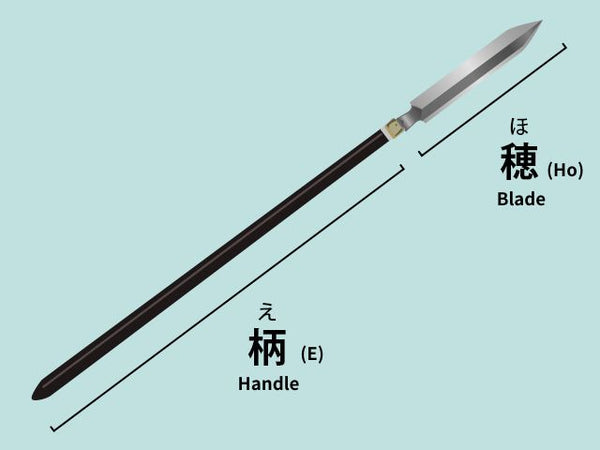
Yari has two main parts, the Blade (穂 Ho) and the Shaft (柄 E).
The Japanese word 穂 refers to the head of a grain plant (like wheat), using it to refer to the blade of a spear is likely because of the visual and functional similarity. The blade of a yari usually range from 20 - 60 cm ( 8-15 inches ).
The shaft of a Yari is made from sturdy woods such as oak (kashi), chestnut, walnut (kurumi), and beech. Additionally, woods like konara oak, Japanese oak (nara), and cherry, known for their combination of hardness and flexibility, were also utilized. The average length of a yari shaft is typically around 4 to 6 meters.
History of the Yari

Yari appear in history around the Yayoi period. In the biography "Fujiwara House Legend" (藤氏家伝 Toushikaden), there was a description that the "Emperor Tenmu天武天皇", who was drunk at a banquet, stuck a spear into the floor, but the main weapons of this period were the Hoko, shield, and yumi.
As the use of Hoko declined, the naginata became the major long-handled weapon. The main weapons of this time were the long-handle weapons "naginata" and "tachi" specialized for mowing down.
However, during the late Muromachi period and throughout the Sengoku period, the mainstream style of combat transitioned from horseback dueling to infantry-based group warfare. In such battlefield, the naginata's wide attack range was seen as a danger to allies, Yari became more useful and replace Naginata.
During the Sengoku period, the Yari became the most effective long-handled weapon. Not only was the spear is good at thrusting attacks, but it was also excellent for overhead striking. Its versatility made it suitable for use not only by skilled warriors and martial tacticians but also by foot soldiers with limited martial training.
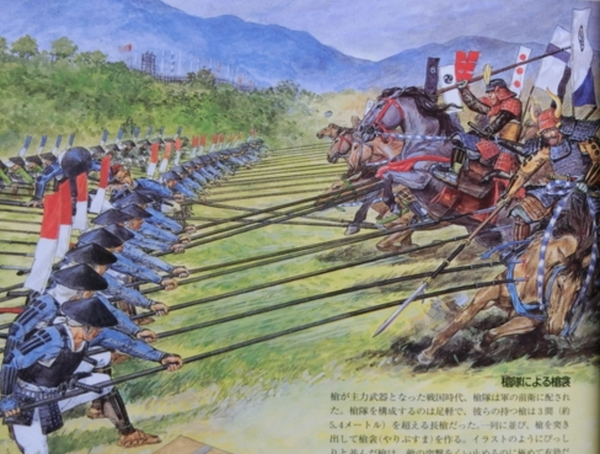
Additionally, when many foot soldiers each held a spear, they created a formation called "Yaributsuma 槍衾," this formation is mainly used in against cavalry. Horses are naturally afraid of sharp objects, so this formation was a good defense against cavalry.
Yari is actually developed based on the designs of the hoko and naginata. Samurai were compelled to switch their favored naginata for Yari not by choice, but due to the demands of large-scale group warfare during the Sengoku period. They began using Yari out of necessity. From the Edo period onward, the naginata gradually became known as a weapon primarily used by women.
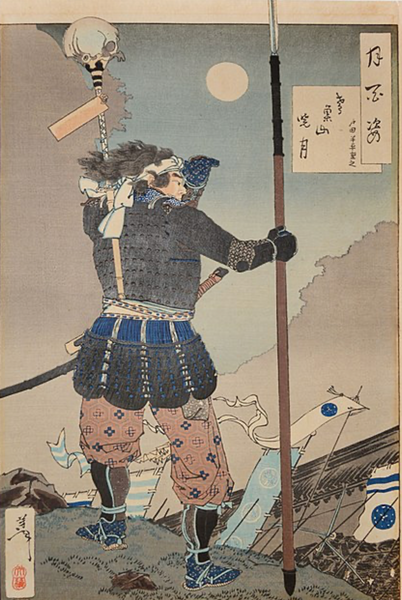
In the Edo period, spears became a symbol of a lord's status and spear fighting techniques, or "Sojutsu 槍術," developed as a martial art. Various schools of Sojutsu were established in different regions.
How Yari was used
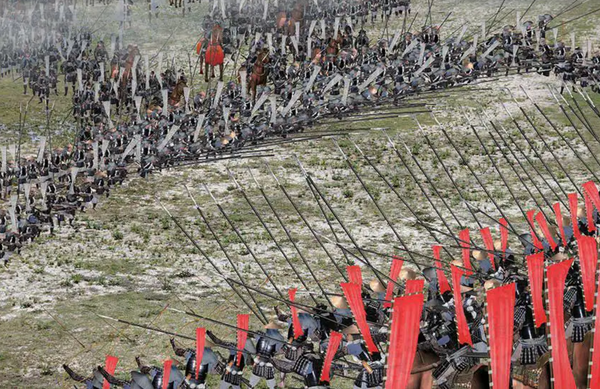
The advantage of the Yari is its wide reach. It allowed attacking opponents with katana or shields from a slightly distant place, or adding power by swinging it around. Yari with long shafts could strike enemies from a distance and also be swung down heavily for striking blows. In close combat, warriors would adjust their grip on the shaft to effectively shorten it for more versatile engagement.
In addition to combat, spears were used to transport goods or people by lining up two points, creating walls using multiple spears, hooking them to high places to use as clotheslines, and so on.
Types of Yari
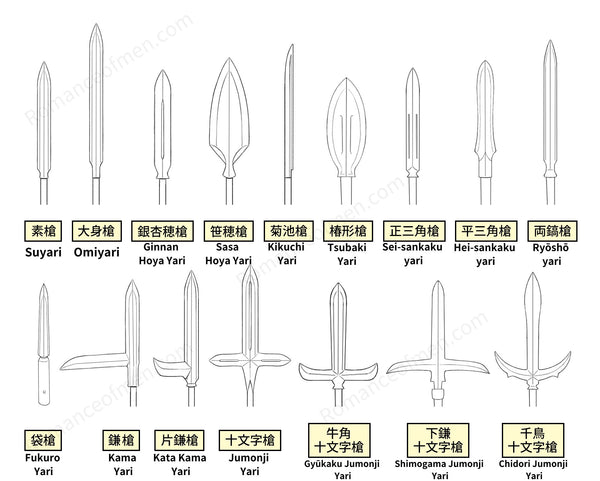
Yari come in a variety of types, differentiated by the length of their blade and handle, the shape of their tip, and other factors.
大身槍 (Omiyari)

The "大身槍" (Omiyari) is a type of Yari, literally means "big body spear", it characterized by its exceptionally long "穂" (ho), or blade. The "柄" (e), or shaft, of the Omiyari is crafted to be shorter and thicker than the blade to facilitate easier handling. Due to the significant length of the blade, the Omiyari becomes heavier and more challenging to handle, hence, it was typically used only by those with considerable physical strength and expertise in spear handling.
Additionally, the "天下三名槍" (Tenka Sanmeisou), or the three most renowned spears in history, are examples of the Omiyari type. This underscores the Omiyari's prominent status in the annals of Japanese weaponry.

The "菊池槍" (Kikuchi Yari) is a type of Yari that features a short blade (similar to a tanto) attached to a long shaft. You can think of Kikuchi Yari as a long stick with a tanto attached to the end. While there are various theories about its origin, it is often said that the Kikuchi Yari originated in the "箱根・竹ノ下の戦い" (Battle of Hakone and Takenoshita) in 1336 (Kenmu 3), where "菊池武重" (Kikuchi Takeshige) is believed to have tied a tanto to the end of a bamboo stick to create a weapon.
There are two main types of Kikuchi Yari, distinguished by the length of their blades: one around 6 sun (approximately 18 cm) and the other around 1 shaku (approximately 30 cm). The longer version, known as "数取り" (Kazutori), was typically carried by squad leaders. The use of Kikuchi Yari of different lengths allowed for easy identification of the number of soldiers in a unit at a glance.

The "鎌槍" (Kama Yari) is a type of Yari that features a side blade resembling a sickle, or "鎌", attached to the blade. It is said that this side blade was added to cut an opponent's legs, while also serving to prevent the Yari from penetrating too deeply.
There are different variations of Kama Yari. The one with a sickle on one side is called "片鎌槍" (Kata Kama Yari). The Yari with sickles arranged in a cross is known as "十文字槍" (Jumonji Yari), "両鎌槍" (Ryo Kama Yari), or "十字槍" (Jyuji Yari).
Within the Jumonji Yari category, there are variations like "片鎌十文字槍" (Kata Kama Jumonji Yari) with uneven lengths of side blades, "千鳥十文字槍" (Chidori Jumonji Yari) resembling a bird in flight, and "掛け外し十文字槍" with detachable side blades. Another type is the "上下鎌十文字槍" (also known as "卍鎌槍" [Manji Kama Yari]), where the sickles face up and down.
These Yari were more expensive to produce than regular ones and were primarily used by generals. The famous samurai "真田幸村" (Sanada Yukimura), also known as "真田信繁" (Sanada Nobushige), is known for using a red Jumonji Yari during the Siege of Osaka, in both the winter and summer campaigns, where he famously charged towards "徳川家康" (Tokugawa Ieyasu)'s camp while on horseback. Sanada Yukimura's exploits in these battles earned him the title "日本一の兵" (Hinomoto Ichino Tsuwamono), meaning "Japan's Greatest Warrior."
袋槍 (Fukuro Yari)

The "袋槍" (Fukuro Yari) literally translated to "Pocket spear), is a type of Yari where the "なかご" (nakago), the stem of the blade that fits into the shaft, is tube-shaped. Also known as "かぶせ槍" (Kabuse Yari), its detachable blade design allows for quick conversion into a spear using materials like bamboo, making it a convenient choice for impromptu weaponry.
管槍 (Kuda Yari)
The "管槍" (Kuda Yari) literally means "Tube Spear", characterized by a metal tube fitted near the top of the shaft, close to the blade. This design, which facilitates quicker thrusting attacks, earned it the nickname "早槍" (Haya Yari, meaning "fast spear").
The inventor of the Kuda Yari was "伊東佐忠" (Ito Sukechika), a spear master. It is said that after injuring his left hand in battle, Ito Sukechika modified the Yari with a tube to make it easier to handle. While various schools teaching the use of Kuda Yari existed across Japan, they were particularly prominent in the Owari Domain.
素槍 (Suyari)
The "素槍" (Suyari) is a type of Yari featuring a long shaft and a straight, slender blade. It's also known as "直槍" (Choku Yari). The blade's cross-section comes in various shapes, such as equilateral triangle, flat triangle, and double ridge (両鎬 [Ryoshinogi]), with the flat triangle being the most common.
銀杏穂槍 (Ginnan Hoya Yari)
The "銀杏穂槍" (Ginnan Hoya Yari) has a blade tip that is a dull angle, not very sharp. While the most common type has double-edged blades with double ridges on both sides, there are also some with equilateral triangular cross-sections.
笹穂槍 (Sasa Hoya Yari)
The "笹穂槍" (Sasa Hoya Yari) features a wide blade resembling a bamboo leaf. The most famous spear of this type is one of the "天下三名槍" (Tenka Sanmeisou), the "蜻蛉切" (Tonbokiri).
Difference between Hoko and Yari

The Yari and Hoko are traditional Japanese spears with notable differences. The Yari typically features a straight blade for thrusting, with some variations having unique cross-sections or multiple points. In contrast, the Hoko, an older spear type, often has a rounder, leaf-shaped double-edged blade for both slashing and thrusting. The Yari's tang (Nakago) is inserted into its shaft and secured with bindings, while the Hoko's blade has a socket for the shaft, fastened with rivets. In Japan, both are generally held with both hands, but in China, the Hoko was often used one-handed to allow for a shield in the other hand, unlike the two-handed Yari.
Famous Yari in Japanese History
The three famous Yari in Japan, known as the 'Tenka Sanmei Yari' 天下三名槍
蜻蛉切 Tonbogiri
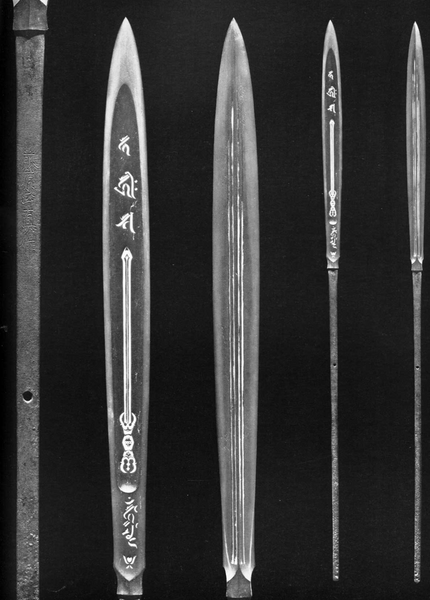
The "蜻蛉切" (Tonbokiri), officially named "槍 銘 藤原正真作" (Spear by Fujiwara Masazane), is a large-bladed Sasaho-type Omiyari famously used by Tokugawa Ieyasu's loyal retainer, Honda Tadakatsu.
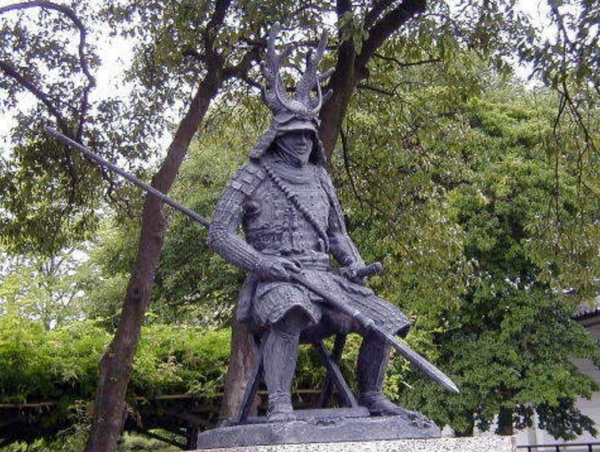
The Sasaho style resembles a bamboo leaf. The blade was originally 43.7 cm long with a 6-meter handle, later shortened to about 90 cm. The Tonbokiri's name, meaning "Dragonfly Cutter," comes from a legend where a dragonfly landing on the spear's blade was cut in half, highlighting its exceptional sharpness.
日本号 Nihon Gō

The "日本号" (Nihongo or Hinomotogou) is a famous Omiyari with a blade length of 79.2 cm and a total length of 321.5 cm. It passed through the hands of several historical figures, from Emperor Ogimachi to Ashikaga Yoshiaki, Oda Nobunaga, Toyotomi Hideyoshi, and finally to the Kuroda family. Known for its honorary rank of Junior Third Rank, it gained the nickname "Drinking Spear" after Kuroda Nagamasa's retainer, Tomonobu Mori, won it in a drinking contest, inspiring the folk song "Kuroda Bushi."
御手杵 (Otegine)

The "御手杵" (Otegine), officially named "槍 銘 義助作", is named for its sheath's resemblance to a "手杵" (tegine), a tool used for pounding mochi. It is one of the largest in the "天下三名槍" with a blade length of about 139 cm and a total length of approximately 333.3 cm. Owned by "結城晴朝" (Yuuki Harutomo), a lord from Shimousa Province (now northern Chiba and parts of Ibaraki), it gained fame when Harutomo returned from battle with several enemy heads impaled on it, one of which fell off and resembled a hand mallet, leading to the creation of its unique sheath. The original spear was destroyed in the 1942 Tokyo air raids, so only replicas exist today.
FAQ about Yari
Did Samurai Use Yari?
Yes, Samurai did use yari on the battlefield, it is actually one of their primary weapons. While many associate the yari primarily with ashigaru (foot soldiers), samurai frequently use this versatile weapon. The yari was one of the most popular weapons during the Sengoku period due to its adaptability and effectiveness. Famous samurai such as Katō Kiyomasa (加藤清正) and Sanada Yukimura (真田幸村) were known for their exceptional skill with the spear.
Can You Cut with a Yari?
Yes, you can cut with a yari because it has edges similar to a katana. However, it is not primarily designed for cutting. The yari is good at thrusting and smashing techniques. Shorter yari (around 2 meters) are particularly effective for thrusting and allow for precise, versatile combat techniques. These thrusting techniques became the foundation of many martial arts schools that still exist today.
Longer yari, on the other hand, were often used to swing downward with great force to smash enemies. This was due to their weight and flexibility, which made precise thrusting more difficult. The smashing technique proved highly effective in collective defensive formations.
What Is the Difference Between a Naginata and a Yari?
Although both the naginata and yari are pole weapons, there are several key differences. First, the yari is usually longer than the naginata. Second, their primary uses differ: the yari is designed primarily for thrusting, while the naginata is better suited for cutting. Additionally, the naginata was more commonly associated with women and monks, while the yari was a battlefield weapon favored by samurai and ashigaru.






















All the best
Lewis